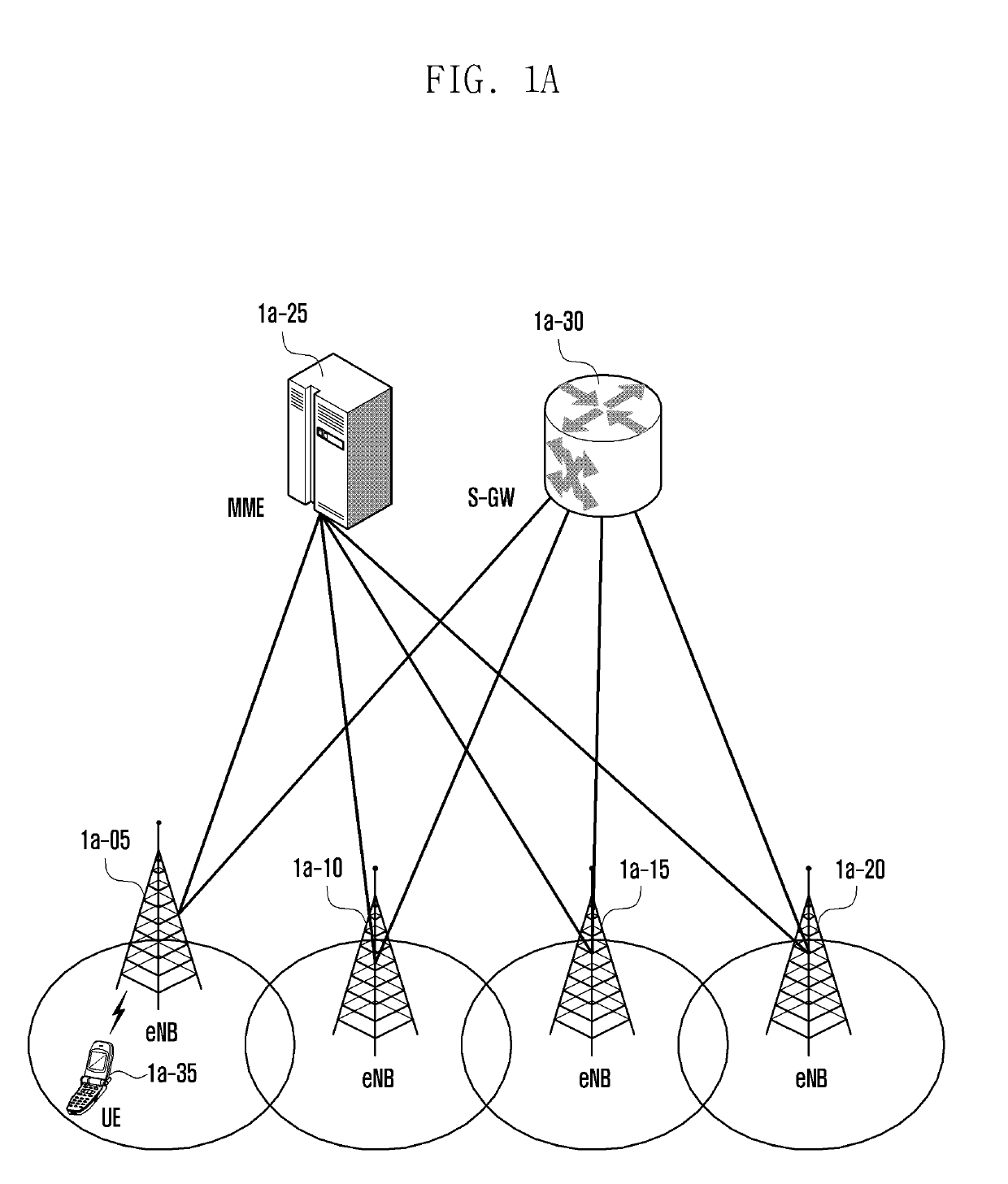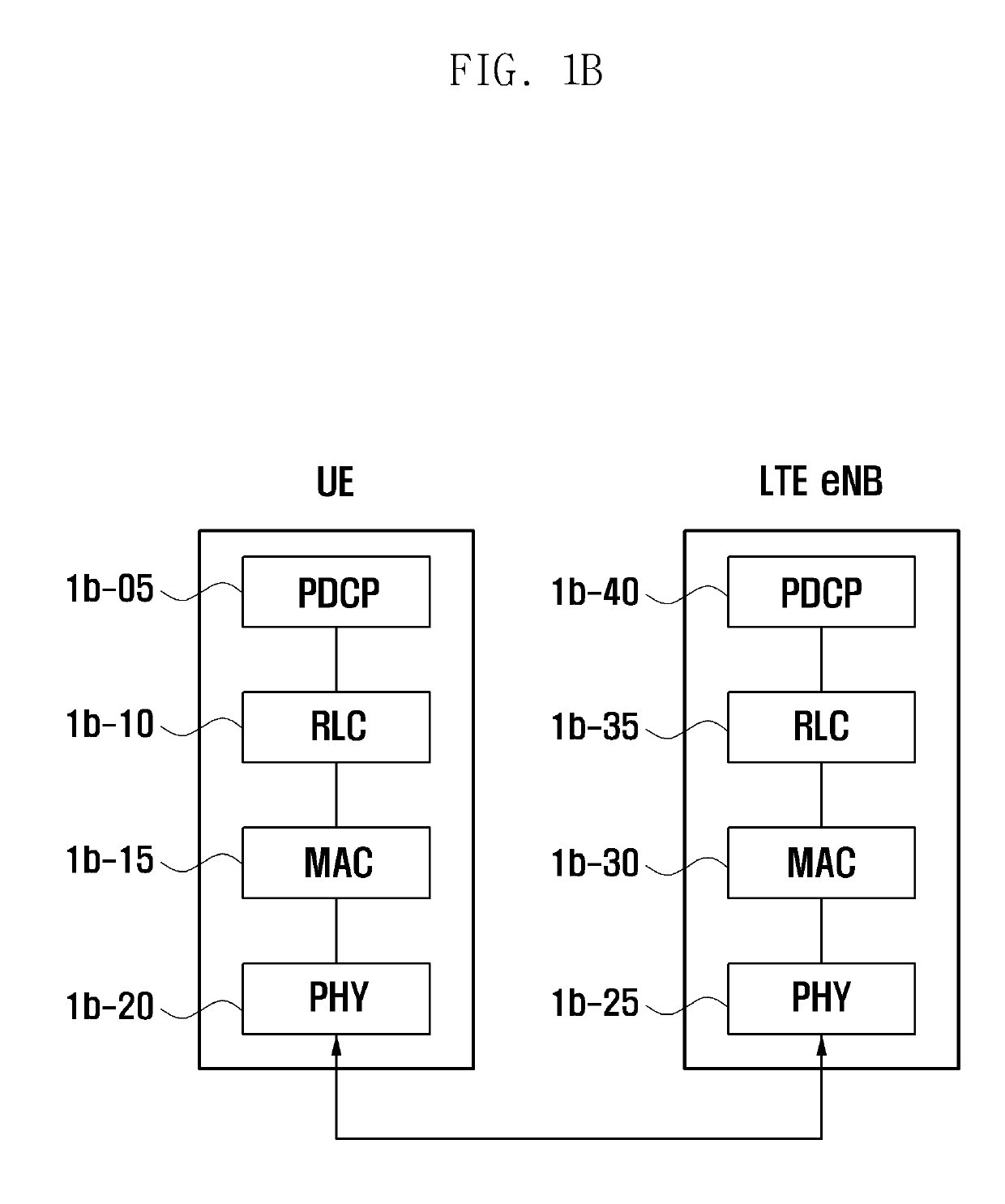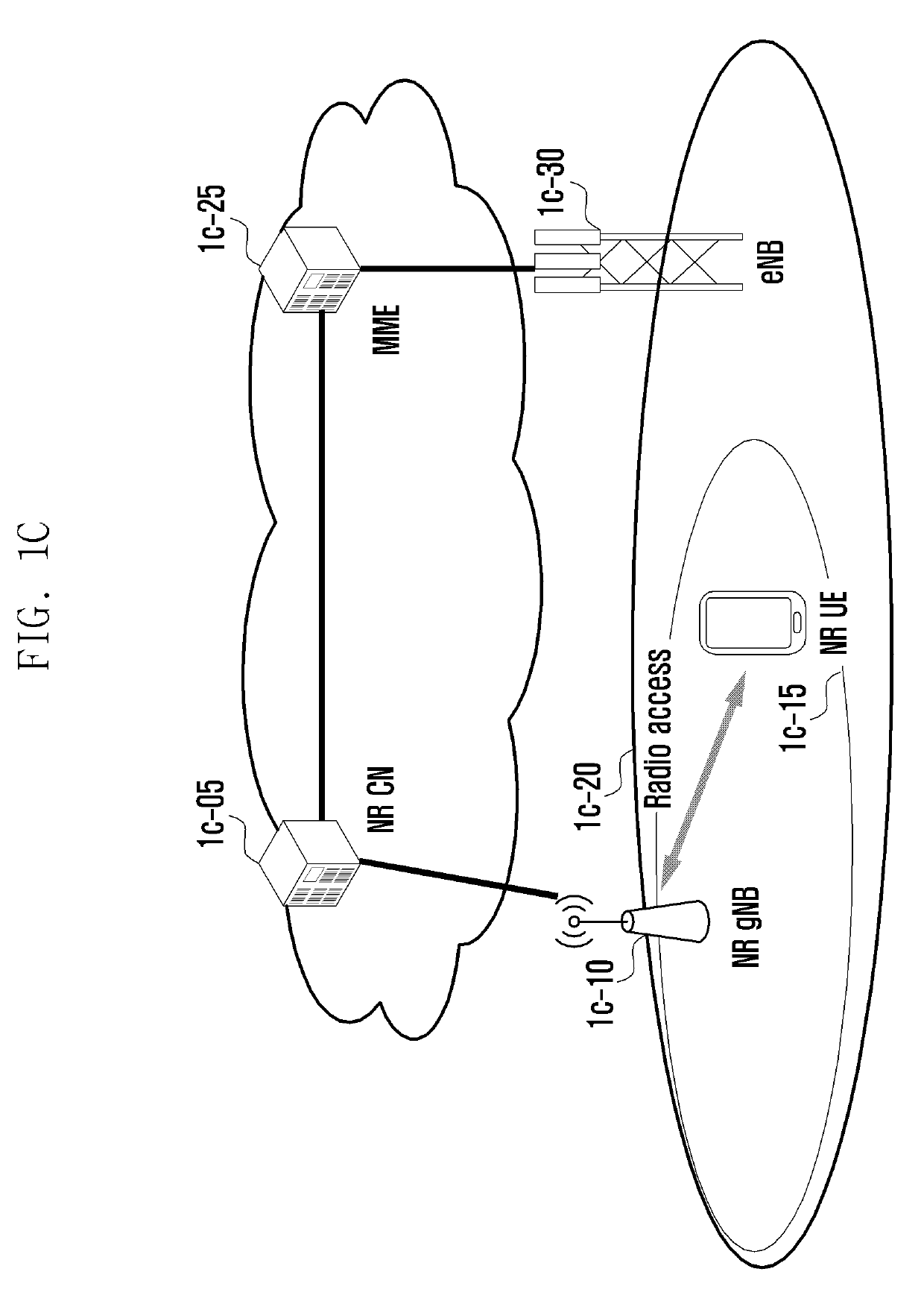Structure of mac sub-header for supporting next generation mobile communication system and method and apparatus using the same
a mobile communication system and structure technology, applied in network traffic/resource management, network topologies, wireless network protocols, etc., can solve the problems of increasing the size of each component does not exactly reflect the real size, and the processing burden of the terminal may be increased, so as to increase the data processing efficiency and reduce the processing burden. , the effect of low latency
- Summary
- Abstract
- Description
- Claims
- Application Information
AI Technical Summary
Benefits of technology
Problems solved by technology
Method used
Image
Examples
first embodiment
[0152]FIG. 1A is a diagram illustrating a structure of a long term evolution (LTE) system according to an embodiment of the present disclosure.
[0153]Referring to FIG. 1A, a radio access network of an LTE system is configured to include next generation base stations (evolved node B, hereinafter, eNB, Node B, or base station) 1a-05, 1a-10, 1a-15, and 1a-20, a mobility management entity (MME) 1a-25, and a serving-gateway (S-GW) 1a-30. User equipment (hereinafter, UE or terminal) 1a-35 accesses an external network through the eNBs 1a-05 to 1a-20 and the S-GW 1a-30.
[0154]A user equipment (hereinafter, UE or terminal) 1a-35 accesses an external network through the eNBs 1a-05 to 1a-20 and the S-GW 1a-30. The eNB is connected to the UE 1a-35 through a radio channel and performs more complicated role than the existing node B. In the LTE system, in addition to a real-time service like a voice over Internet protocol (VoIP) through the Internet protocol, all the user traffics are served through...
second embodiment
[0297]FIG. 2A is a diagram illustrating a structure of an LTE system according to an embodiment of the present disclosure.
[0298]Referring to FIG. 2A, a radio access network of an LTE system is configured to include next generation base stations (evolved node B, hereinafter, eNB, Node B, or base station) 2a-05, 2a-10, 2a-15, and 2a-20, a mobility management entity (MME) 2a-25, and a serving-gateway (S-GW) 2a-30. User equipment (hereinafter, UE or terminal) 2a-35 accesses an external network through the eNBs 2a-05 to 2a-20 and the S-GW 2a-30.
[0299]Referring to FIG. 2A, the eNB 2a-05 to 2a-20 correspond to the existing node B of the UMTS system. In the LTE system, in addition to a real-time service like a voice over Internet protocol (VoIP) through the Internet protocol, all the user traffics are served through a shared channel and therefore an apparatus for collecting and scheduling status information, such as a buffer status, an available transmit power status, and a channel state of...
third embodiment
[0435]FIG. 3A is a diagram illustrating a structure of an LTE system according to an embodiment of the present disclosure.
[0436]Referring to FIG. 3A, a radio access network of an LTE system is configured to include next generation base stations (evolved node B, hereinafter, eNB, Node B, or base station) 3a-05, 3a-10, 3a-15, and 3a-20, a mobility management entity (MME) 3a-25, and a serving-gateway (S-GW) 3a-30. User equipment (hereinafter, UE or terminal) 3a-35 accesses an external network through the eNBs 3a-05 to 3a-20 and the S-GW 3a-30.
[0437]In FIG. 3A, the eNB 3a-05 to 3a-20 correspond to the existing node B of the UMTS system. The eNB is connected to the UE 3a-35 through a radio channel and performs more complicated role than the existing node B. In the LTE system, in addition to a real-time service like a voice over Internet protocol (VoIP) through the Internet protocol, all the user traffics are served through a shared channel and therefore an apparatus for collecting and sc...
PUM
 Login to View More
Login to View More Abstract
Description
Claims
Application Information
 Login to View More
Login to View More - R&D
- Intellectual Property
- Life Sciences
- Materials
- Tech Scout
- Unparalleled Data Quality
- Higher Quality Content
- 60% Fewer Hallucinations
Browse by: Latest US Patents, China's latest patents, Technical Efficacy Thesaurus, Application Domain, Technology Topic, Popular Technical Reports.
© 2025 PatSnap. All rights reserved.Legal|Privacy policy|Modern Slavery Act Transparency Statement|Sitemap|About US| Contact US: help@patsnap.com



